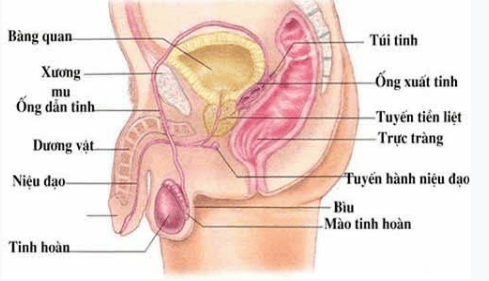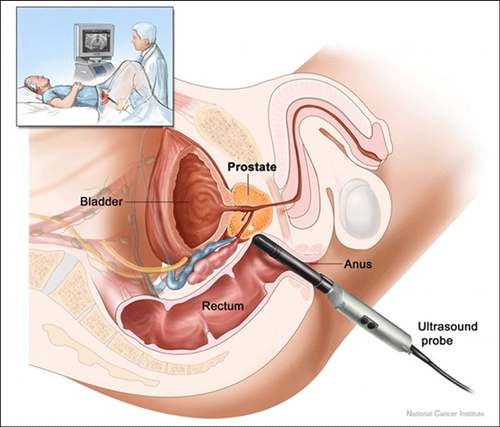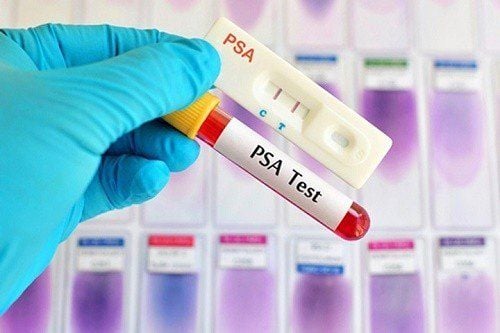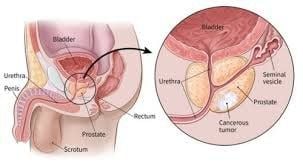This is an automatically translated article.
The article was written by Specialist Doctor I Nguyen Thi Minh Thuyen - Pathologist, Laboratory Department - Vinmec Da Nang International General Hospital.Cancer can start anywhere in the body. Prostate cancer begins in the prostate gland, when cells in the prostate grow out of control.
1. What is prostate cancer?
Cancer cells can spread to other parts of the body. Cancer cells in the prostate can sometimes go to bones or other organs and grow there, called metastases.
Cancer is always named for where it started. So when prostate cancer spreads to the bone (or anywhere else), it's still called prostate cancer. It is not called bone cancer unless it starts in the cells in the bone.
● Prostate
The prostate is a gland found only in men, so only men can get prostate cancer.
The prostate gland is located just below the bladder (the hollow organ where urine is stored) and in front of the rectum (the end of the intestine). The tube that carries urine (urethra) passes through the prostate gland. The prostate gland produces certain fluids that help keep sperm alive and healthy.

2. How will the doctor know I have prostate cancer?
Prostate cancer tends to grow slowly over many years. Most men with early prostate cancer do not have noticeable changes. Signs of prostate cancer often appear later, as the cancer develops.
Some signs of prostate cancer are difficulty urinating, hematuria, erection problems, and pain in the back, hips, ribs or other bones.
If there are signs that suggest prostate cancer, you will be given further tests. Some tests you may need:
PSA blood test : PSA is a protein made by the prostate gland and can be found in the blood. Prostate cancer can increase PSA levels. Blood tests to see PSA levels and changes over time. Transrectal ultrasound (TRUS): With this test, a small probe is inserted into the rectum. It emits sound waves and picks up echoes from the prostate gland. The echo is made into an image on a computer screen for the doctor to evaluate the prostate. MRI: this technique uses radio waves and a strong magnetic field (magnet) to create detailed images of the body. An MRI evaluates prostate damage and can show whether cancer has spread beyond the prostate to nearby organs. Prostate biopsy: the doctor uses a long, hollow needle to remove small pieces of prostate tissue. This technique is usually done with transrectal ultrasound (TRUS) or MRI, or both. The prostate fragment is then sent to the Pathology room to check for cancer cells. Ask your doctor what kind of biopsy you need and how. Lymph node biopsy: Lymph nodes are small bean-shaped parts of the immune system. A lymph node biopsy may be ordered if the doctor thinks the cancer may have spread from the prostate gland to nearby lymph nodes.

CT scan : uses X-rays to create detailed images of the body. A CT scan can show whether the cancer has spread outside the prostate. Bone scan: This test can see if cancer has spread to the bones. Small amounts of low-level radioactive material are released into the bloodstream, where they are deposited in damaged areas of bone throughout the body. A special camera finds radioactivity and creates an image of your bones. Questions to ask the doctor
What tests do I need? Who will do these tests? Where will I be tested? Can anyone explain them to me? How is the test done and when will I get the results? Who will explain the results to me? What do I need to do next?

3. How serious is my cancer?
If you have prostate cancer, your doctor will want to find out if it has spread to pain, called staging. You may have heard other people say their cancer is stage 1 or 2. Your doctor will determine the stage of your cancer to help decide what type of treatment may be best for you.
Staging is based on the growth or spread of cancer from the prostate gland to other parts of the body, also including blood PSA levels and cancer histology. The pathologist will look at the cancer cells under a microscope and score. Cells that look very different from normal cells are given a higher score and cancer is more likely to grow faster.
Cancer histology was assessed using the Gleason scale (from 6 to 10). Ask your doctor for an explanation of the cancer's histology, as it can also help decide what treatment might be best for you.
Your cancer could be stage 1, 2, 3 or 4. The lower the number, the less the cancer has spread. A higher number, like stage 4, means the disease is more serious and has spread beyond the prostate.

If the cancer has not spread to other parts of the body, it may also be classified as a risk group. The risk group is based on prostate cancer spread, PSA levels, and prostate biopsy results. The risk group can help determine what other tests are needed, and the best treatment options.
Be sure to ask your doctor about your cancer's stage, grade, risk group, and what they mean for you.
Questions to ask the doctor
Does the doctor know my cancer stage and risk group? If not, how and when will the doctor determine? Can you explain what stage and risk group mean in my case? What will happen next? Vinmec International General Hospital is one of the hospitals that not only ensures professional quality with a team of leading doctors, modern equipment and technology, but also stands out for its examination and consulting services. and comprehensive, professional medical treatment; civilized, polite, safe and sterile medical examination and treatment space. Customers when choosing to perform tests here can be completely assured of the accuracy of test results.
Please dial HOTLINE for more information or register for an appointment HERE. Download MyVinmec app to make appointments faster and to manage your bookings easily.
Article referenced source: American Cancer Society














